What time does a passenger plane take off
Many people are interested in the speed of an aircraft during takeoff. Some are interested because they are curious about the history of aircraft construction, and others because their first flight is about to begin. There are a large number of opinions on this subject, and many of them, as always, are erroneous. Nevertheless, it is this moment of lift-off from the ground that is one of the most important and lengthy processes for any air transport. This topic will be discussed in more detail later.
The take-off phase takes all the time from the beginning of the movement to the complete separation from the surface of the canvas. However, there are several important nuances here - the final lifting force must exceed the mass of the rising aircraft so that it can eventually gradually break away from. Moreover, each model of air transport has its own capabilities for gaining speed on the runway. For example, in passenger liners, the engines switch to a special mode that lasts a couple of minutes, which allows you to rise most quickly. However, it is rarely used near settlements so as not to get the noise of the locals.
Takeoff types
There are a number of factors that pilots have to keep in mind at the beginning of the takeoff phase. Basically, these are weather conditions, direction and strength of the wind (if the wind blows directly “in the face”, the plane will have to pick up much more speed to climb, in addition, sometimes a strong wind can deflect the aircraft to the side), limited runway and engine power . And there are still a huge number of different little things that ultimately have a critical impact on the process. All this forced aircraft designers to work on improving the models of flying vehicles.
Heavy transport liners have two takeoff options at once, namely:
- The aircraft is capable of accelerating only after the engines have developed the necessary thrust. Up to this point, the liner just stands on the brakes.
- The classic take-off comes immediately after a short stop. In this case, a preliminary set of power from the engines is not required. The plane simply accelerates and takes off into the sky.
Other types of aviation, mainly military, use their own methods, for example:
- Aircraft serving on aircraft carriers take off with the help of a whole system of auxiliary means. Catapults, various springboards are also used, in special occasions fighters even install additional engines.
- Vertical takeoff is used only for those aircraft, which have a vertical thrust engine. good example serves Yak-38. In this case, the aircraft gradually gains altitude from a standstill or from a slight acceleration immediately switches to level flight.
The usual takeoff speed for an aircraft like the Boeing 737 to lift off the ground is 220 km/h. While another model under the index 747 already requires 270 km / h. Sometimes this may not be enough. This is especially pronounced in strong winds. In such cases, more long distance run.
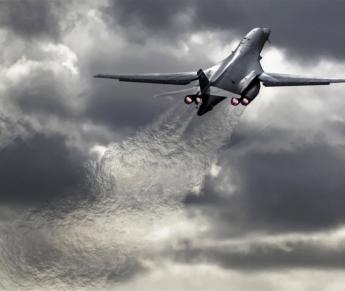
Does the passenger of an airliner, moving from one point of the planet to another, think: what was the speed of the plane during takeoff? Or is it enough sensations: the beginning of movement; set speed; separation. Most likely the last guess. Details are the work of specialists.
For a long time, more than a century ago, man overcame gravity and soared like a bird. What was more in this indomitable desire - to rise into the air? Flight romance? Or naked rationalism? Or maybe someone in this way tried to confirm their scientific calculations? History is silent about this, and the facts dryly list the number of disasters and victims that mark the path to heaven.
Aircraft. They really do look like birds. Big and small birds. Large and small aviation. Birds of prey. Military aviation. Migratory birds. Passenger Airbuses. The analogy is everywhere.
In order to take to the air, many birds gain momentum on the ground or on the water. Planes scatter along the runway, and seaplanes along the water surface. What speed should be developed from the starting point to the breakaway point? What effort should be applied for this? Birds are guided by an innate instinct, and a person is guided by accumulated knowledge, experience and accurate physical and mathematical calculations.
What do you need to be able to tear off a multi-ton structure from the ground? What do you need to know to design and build an airplane? All the basic laws of physics are intertwined into a "Gordian knot", which is dissected by the sharpness and accuracy of calculations of power and aerodynamic characteristics.
It can be strange to see how a clumsy-looking “transporter”, having slightly run up, slowly but surely rises above the ground. And, on the contrary, a lean fighter rushes and rushes along the runway, and only when it already seems that there won’t be enough space for it, it soars up.
What is more important when taking off - speed, shape or weight? And where does takeoff begin? At the moment of separation from the ground? Or when climbing a certain height? And if you break away from the take-off area, then take off, then vertical take-off aircraft, in general, at this stage have a speed close to zero.
Technically, takeoff is considered to be the movement of an aircraft with acceleration from the start of the takeoff run to the rise to a height of 25 meters.
At some airports where the intensity of aircraft traffic is very high, the takeoff of the aircraft begins immediately after taxiing to the runway, without stopping. Takeoff from the brakes, provides for a set of engines of maximum power, in static state. After that, the brakes are smoothly released, and the plane begins its takeoff run. Takeoff with a short stop is a kind of intermediate option.
At the moment of acceleration, liftoff and takeoff, the aircraft engines operate in the nominal load mode, both mechanical and thermal. This mode can be activated, only for a short time.
There is one indispensable component in the acceleration of the aircraft - the speed of decision making. That is, the speed at which, in the event of a failure in the operation of the engines or the detection of any other malfunction, emergency braking is possible, without catastrophic consequences. If this speed is overcome, then there is only one way out - takeoff followed by a glide path. Fortunately, the technical equipment of modern aircraft allows you to lift the car into the air, even in the event of a malfunction of one of the engines.
The mechanization of the wing is of great importance during the acceleration and takeoff of the aircraft. Flaps, fenders, spoilers, spoilers and other elements, together affect the load-bearing properties of the wing. For example, retractable flaps, increasing the wing area, can reduce the takeoff speed. Flaps are released just before acceleration.
While the aircraft is accelerating along the runway with the front wheel, which is centered and locked, correcting the movement of the aircraft, if necessary, is carried out by braking the main wheels.
Upon reaching takeoff speed, the pilot smoothly takes the helm, thereby increasing the angle of attack. First, the nose of the aircraft rises, then the entire machine is lifted off the ground. Having overcome a five-meter height, the crew removes the landing gear.
The takeoff is considered completed when the aircraft reaches the transition altitude. The transition height is a conventional unit, not tied to the height relative to the runway or "sea level". It is generally accepted by all international dispatching services and is determined by the preliminary "echelon". In the transition altitude position, the crew is not allowed to continue level flight. The aircraft performs a climb and occupies its "working" level, along which it continues the route.
For each type of aircraft there is a certain average takeoff speed. So, for the Boeing 747, it is approximately 270 km / h; for Airbus A300 - 300 km/h; for TU 154 M - 210 km / h; for IL 96 - 250 km / h; for Yak 40 - 180 km / h.
However, we should not forget that the liftoff speed directly depends on the specific load on the wing and the air density. That is, the lower the air density (highlands, summer heat), the lower the lift coefficient, and the greater the separation speed should be.
In some emergency cases (insufficient runway length), a "powered" takeoff may be performed. In this case, the pilot, by means of the steering wheel, sharply changes the angle of attack, thereby significantly increasing lifting force but at the expense of speed. The maneuver, in itself, is very dangerous, threatening to lose control.
On the contrary, when an aircraft takes off, such a moment as “holding” is provided. The pilot does not immediately bring the car to the transition height, but directs it along a small upward angle, continuing to pick up speed.
The loss of speed during takeoff is especially dangerous because the aircraft, at this moment, is loaded with fuel to the maximum, which significantly increases the total weight. Heavy weight increases uncontrollable inertia, which can lead to an aircraft crash.
In winter, an increased coefficient is added to the take-off speed, in case of a temperature difference in height. The upper air layers can be much warmer than those above ground. As a result, the air density drops sharply and the "failure" of the aircraft, followed by a fall, is inevitable.
Such "surprises" are provided by the staff of ground and air meteorological services that provide information to controllers, and controllers are always in touch with aircraft crews.
Do not worry if the flight safety is handled by professionals.
Aircraft landing and takeoff speed are parameters calculated individually for each airliner. Does not exist standard value which all pilots must adhere to, because aircraft have different weights, dimensions, and aerodynamic characteristics. However, the value of speed at is important, and non-compliance with the speed limit can turn into a tragedy for the crew and passengers.
How is the takeoff?
The aerodynamics of any airliner is provided by the configuration of the wing or wings. This configuration is the same for almost all aircraft except for small parts. The lower part of the wing is always flat, the upper one is convex. Moreover, the type of aircraft does not depend on this.
The air that passes under the wing when accelerating does not change its properties. However, the air, which at the same time passes through the top of the wing, narrows. Consequently, less air flows through the top. This results in a pressure difference under and over the wings of the aircraft. As a result, the pressure above the wing decreases, and under the wing it increases. And it is precisely due to the pressure difference that a lifting force is formed that pushes the wing up, and together with the wing, the aircraft itself. At the moment when the lifting force exceeds the weight of the liner, the aircraft lifts off the ground. This happens with an increase in the speed of the liner (with an increase in speed, the lifting force also increases). The pilot also has the ability to control the flaps on the wing. If the flaps are lowered, the lift under the wing changes vector, and the aircraft rapidly gains altitude.
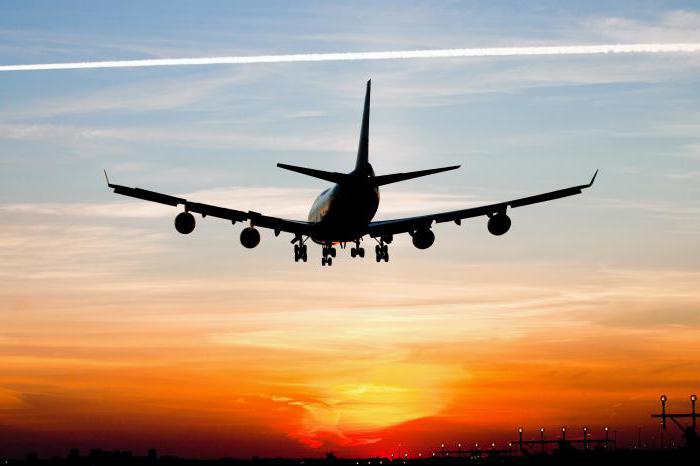
It is interesting that a smooth horizontal flight of the liner will be ensured if the lifting force is equal to the weight of the aircraft.
So, the lift determines at what speed the plane will take off the ground and start flying. The weight of the liner, its aerodynamic characteristics, and the thrust force of the engines also play a role.
during takeoff and landing
In order for a passenger plane to take off, the pilot needs to develop a speed that will provide the required lift. The higher the acceleration speed, the higher the lifting force will be. Consequently, at a high acceleration speed, the aircraft will take off faster than if it were moving with no high speed. However, the specific speed value is calculated for each liner individually, taking into account its actual weight, loading degree, weather conditions, runway length, etc.
Generally speaking, the well-known passenger liner The Boeing 737 lifts off the ground as its speed rises to 220 km/h. Another well-known and huge "Boeing-747" with a lot of weight off the ground at a speed of 270 kilometers per hour. But the smaller Yak-40 liner is capable of taking off at a speed of 180 kilometers per hour due to its low weight.
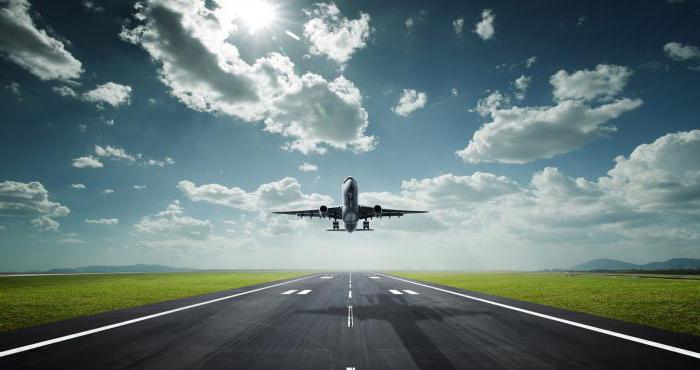
Takeoff types
There are various factors that determine the take-off speed of an airliner:
- Weather conditions (wind speed and direction, rain, snow).
- Runway length.
- Strip coverage.
Depending on the conditions, takeoff can be carried out in different ways:
- Classic speed dial.
- From the brakes.
- Takeoff with the help of special means.
- Vertical climb.
The first method (classic) is used most often. When the runway is long enough, the aircraft can confidently gain the required speed necessary to provide high lift. However, in the case when the runway length is limited, the aircraft may not have enough distance to reach the required speed. Therefore, it stands for some time on the brakes, and the engines gradually gain traction. When the thrust becomes strong, the brakes are released and the aircraft abruptly takes off, quickly picking up speed. Thus, it is possible to shorten the take-off path of the liner.
There is no need to talk about vertical takeoff. It is possible in the presence of special engines. And takeoff with the help of special means is practiced on military aircraft carriers.
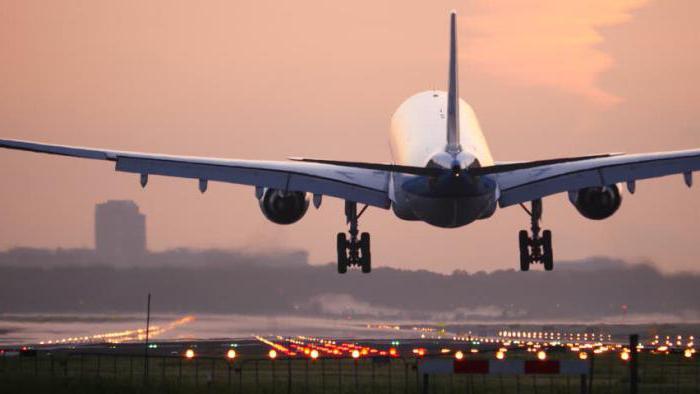
What is the landing speed of the aircraft?
The liner does not land on the runway immediately. First of all, there is a decrease in the speed of the liner, a decrease in altitude. First, the aircraft touches the runway with the landing gear wheels, then it moves at high speed already on the ground, and only then does it slow down. The moment of contact with the GDP is almost always accompanied by shaking in the cabin, which can cause anxiety among passengers. But there is nothing wrong with that.
Aircraft landing speeds are practically only slightly slower than takeoff speeds. A large Boeing 747, when approaching the runway, has an average speed of 260 kilometers per hour. This speed should be at the liner in the air. But, again, the specific speed value is calculated individually for all liners, taking into account their weight, workload, weather conditions. If the aircraft is very large and heavy, then the landing speed should be higher, because during landing it is also necessary to "keep" the required lift. Already after contact with the runway and when moving on the ground, the pilot can slow down by means of the landing gear and flaps on the wings of the aircraft.
Airspeed
The speed during landing of an aircraft and during takeoff is very different from the speed at which an aircraft is moving at an altitude of 10 km. Most often, aircraft fly at a speed that is 80% of the maximum. So the maximum speed of the popular Airbus A380 is 1020 km/h. In fact, flying at cruising speed is 850-900 km/h. The popular "Boeing 747" can fly at a speed of 988 km / h, but in fact its speed is also 850-900 km / h. As you can see, the flight speed is fundamentally different from the speed when the aircraft is landing.
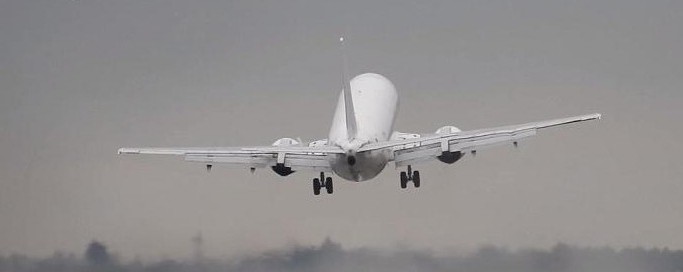
Note that today the Boeing company is developing a liner that will be able to gain flight speed at high altitudes up to 5000 kilometers per hour.
Finally
Of course, the landing speed of an aircraft is an extremely important parameter, which is calculated strictly for each airliner. But it is impossible to name a specific value at which all planes take off. Even identical models (for example, Boeing 747s) will take off and land at different speeds due to various circumstances: workload, amount of fuel filled, runway length, runway coverage, presence or absence of wind, etc.
Now you know what is the speed of the aircraft when landing and when it takes off. Everyone knows the averages.
7. Stability and controllability
8. Automatic control system
9. Airplane flight with asymmetrical thrust
10. Aircraft Disadvantages
The takeoff path extends from the starting point to a climb of 1500 feet, or the end of flap retraction at V FTO , whichever is higher.
The maximum takeoff weight of an aircraft is limited by the following conditions:
- The maximum allowable energy absorbed by the brakes in the event of an aborted takeoff.
- The minimum allowable climb gradient.
- The maximum allowable engine operation time in take-off mode, in the event of a continued take-off to gain the required altitude and acceleration for mechanization cleaning.
- Available takeoff distance.
- The maximum allowable certified takeoff weight.
- The minimum allowable clearance over obstacles.
- The maximum allowable ground speed of separation from the runway. Typically 225 knots, but possibly 195 knots. This speed is written directly on the pneumatics.
- Minimum evolutionary takeoff speed; V MCG
Minimum Permissible Climb Gradient
In accordance with the FAR 25 airworthiness standards, the gradient is normalized in three segments:
- Landing gear extended, flaps in takeoff position - gradient must be greater than zero.
- After gear retraction, flaps in takeoff position - minimum gradient 2.4%. Take-off weight is limited, as a rule, to the fulfillment of this requirement.
- In cruise configuration, the minimum gradient is 1.2%.
takeoff distance
The available take-off distance includes the operational length of the runway, taking into account the end safety strip and the clearway.
The available take-off distance cannot be less than any of the three distances:
- Continued take-off distances from start of motion to climb of 35 feet conditional obstacle and safe speed V 2 with engine failure at decision speed V 1 .
- Aborted takeoff distances with engine failure at V EF . Where V EF is the speed at the time of the engine failure, assuming that the pilot recognizes the failure and takes the first action to abort the takeoff at decision speed V 1 . On a dry runway, the effect of running engine reverse is not taken into account.
- Take-off distances with normally operating engines from the start of the movement to the climb of a conditional obstacle of 35 feet, multiplied by a factor of 1.15.
Take-off distance available includes runway operating length and runway length.
The length of the clearway may be added to the available take-off distance, but not more than half the airborne take-off path from the take-off point to a climb of 35 feet and a safe speed.
If we add the length of the runway to the runway length, then we can increase the takeoff weight, and the decision speed will increase, to provide a climb of 35 feet over the end of the runway.
If we use a clearway, we can also increase the takeoff weight, but this will reduce the decision speed, since we need to ensure that the aircraft stops in the event of a rejected takeoff with an increased weight within the operating length of the runway. In the event of a continued takeoff, the aircraft will then climb 35 feet off the runway but over the clearway.
Minimum Permissible Obstacle Clearance
The minimum clearance over obstacles on a "clean" takeoff path is 35 feet.
A "clean" takeoff path is one with a climb gradient reduced by 0.8% from the actual climb gradient for the conditions.
When constructing a scheme for a standard exit from the airfield area after takeoff, a minimum gradient of a “clean” trajectory of 2.5% is laid. Thus, in order to fulfill the exit scheme, the maximum takeoff weight of the aircraft must provide a climb gradient of 2.5 +0.8 = 3.3%. Some exit patterns may require a higher gradient, requiring a reduction in takeoff weight.
Minimum evolutionary takeoff speed
This is the ground reference speed during the take-off run at which, in the event of a sudden failure of a critical engine, it is possible to maintain control of the aircraft using only the rudder and maintain lateral control to such an extent as to keep the wing close to horizontal to ensure a safe continuation of the take-off. The V MCG is independent of the runway condition, since its determination does not take into account the reaction of the runway to the aircraft.
The table shows V MCG in knots for takeoff with 22K thrust engines. Where Actual OAT is the outside air temperature and Press ALT is the airfield elevation in feet. The underscript refers to the takeoff with the off engine air bleeds, since the engine thrust increases, so does V MCG .
| Actual OAT | Press ALT | ||||
| C | 0 | 2000 | 4000 | 6000 | 8000 |
| 40 | 111 | 107 | 103 | 99 | 94 |
| 30 | 116 | 111 | 107 | 103 | 99 |
| 20 | 116 | 113 | 111 | 107 | 102 |
| 10 | 116 | 113 | 111 | 108 | 104 |
For A/C OFF increase V1 by 2 knots.
A takeoff with a failed engine may only be continued if the engine fails at a speed not less than V MCG .
Wet runway takeoff
When calculating the maximum allowable takeoff weight, in the case of an extended takeoff, a reduced conditional obstacle height of 15 feet is used, instead of 35 feet for a dry runway. In this regard, it is impossible to include a strip free from obstacles in the calculation of the takeoff distance.
When calculating a rejected takeoff, it is allowed to take into account the effect of engine reverse.
Takeoff from a strip covered with a layer of precipitation
Taking off from a runway covered with a layer of precipitation is subject to a number of restrictions:
- It is prohibited to use climb gradient enhancement technology.
- It is forbidden to reduce the engine power on takeoff using the outside air temperature simulation technology.
- Anti-yuz must be enabled and working.
Takeoff of an aircraft using partial takeoff engine thrust
In conditions where the maximum allowable takeoff weight significantly exceeds the actual one, it is recommended to take off with partial takeoff engine thrust. This makes it possible to increase the reliability of the engines and reduce the cost of operating the engines, creates less noise, contributes to the comfort of passengers due to a smoother change in flight parameters, especially if you have to switch to level flight shortly after takeoff. It is especially desirable to do this during takeoffs in hot weather, since the probability of exceeding the maximum allowable gas temperature behind the turbine during takeoff acceleration is sharply reduced.
There are two ways to reduce traction:
- stepwise transfer of the engine to the lower stage of thrust. CFM 56-3 has 4 modifications: B4, B1, B2 and C1 having a maximum static thrust of 18.5, respectively; twenty; 22 and 23.5 thousand pounds. So, if you install Derate 1 on the C1 modification, FMC will build calculations for a maximum thrust of 22 thousand pounds, and if Derate 2 - then 20 thousand.
- simulation of outdoor temperature.
It is well known that with an increase in air temperature, the maximum allowable take-off weight decreases. This is primarily due to a decrease in the available thrust of the engines. As with any heat engine, jet engine power directly depends on the amount of heat transferred to the working fluid. The upper limit of gas temperature is limited by the strength of the turbine, so as the temperature of the air entering the engine rises, the temperature difference decreases.
In addition, with an increase in air temperature, its density decreases, which leads to an increase in take-off speeds and, consequently, a decrease in the allowable take-off weight with unchanged parameters of the departure aerodrome.
The outside air temperature simulation method is to set the FMC to a temperature at which the actual takeoff weight would be the maximum allowable.
Outdoor temperature simulation method
Application this method has a number of limitations. According to the norms, it is impossible to reduce traction by this method by more than 25%. The use of this method is prohibited when:
- Takeoff from a runway covered with a layer of precipitation.
- Take off with a tailwind.
- Takeoff with RMS off.
- When the FMC is not working.
- With expected wind shear on takeoff.
- In case of anti-yuz failure
Both methods of takeoff thrust reduction do not contradict each other and can be used simultaneously. At the same time, there is a fundamental difference in their effect on takeoff characteristics.
When using Derate, the new set maximum thrust must not be exceeded. As a reminder of this, the limiters will lower on the N1 speed indicator.
When using assumed temperature, pilots can increase thrust to maximum at any time.
Based on this, the VMCG calculation is built. Accordingly, when using assumed temperature, VMCG does not change, and when using Derate, it decreases due to a decrease in the turning torque from the engine that produces less thrust.
This Derate property can help increase the maximum allowable takeoff weight when taking off from short runways and from runways covered with a layer of precipitation. This is because the weight in this case is limited by the need to reach VMCG on takeoff and then stop within the runway if necessary.






